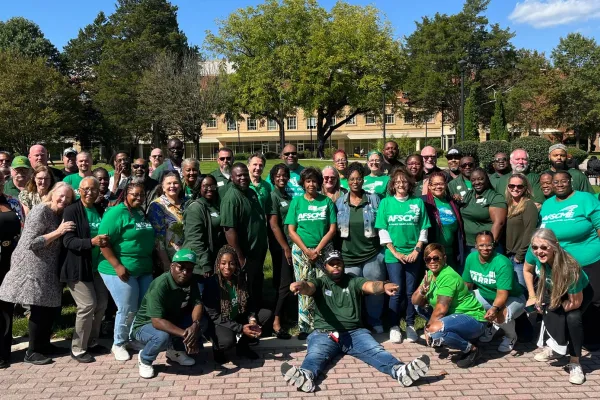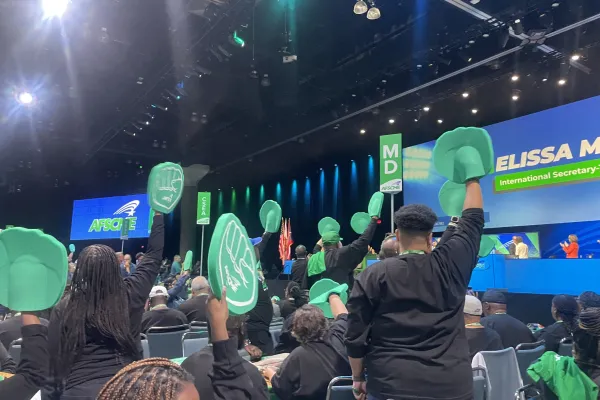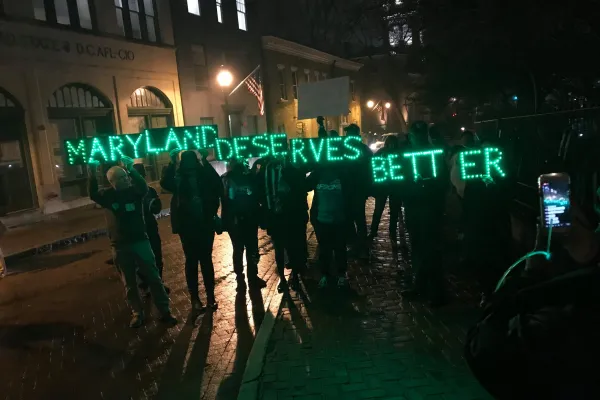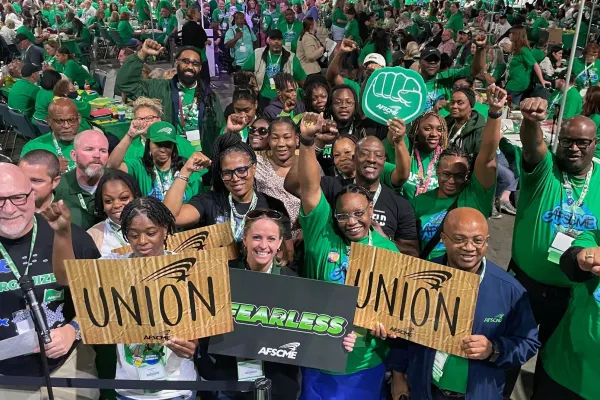Our Union
In the Beginning
AFSCME Maryland was born in the early 1970’s as state and higher education workers came together to focus specifically on their issues and to win collective bargaining rights. Many Maryland locals were chartered by AFSCME International in the 1960’s, and have almost forty years of history, fighting and winning results.
From the beginning, AFSCME Maryland set an aggressive agenda. Recognizing that state laws and political decisions controlled our work lives, AFSCME Maryland members embarked on a mission to develop political power through legislative action.
AFSCME Maryland activists pushed through important laws in the late 70’s and 80’s defining rights for workers. Important gains were won. AFSCME won passage of a state grievance procedure law for both exempt and non-exempt employees, providing employees with an avenue to appeal unfair disciplinary and supervisory actions. Lay-off rights according to seniority were established which eliminated arbitrary selections in times of budget crisis.
AFSCME Maryland won the right to use sick leave for childbirth and adoption instead of forcing employees to use vacation for these purposes.
The early 1990s brought hard times for Maryland State employees as budget cuts threatened earlier gains. Layoffs, furloughs, and even an uncompensated expansion of the workweek were used to balance the budget on the backs of the state workforce.
These actions only increased AFSCME Maryland's determination to win collective bargaining rights so that employees would have a more powerful voice in determining their working conditions in good times and in bad.
Collective Bargaining Achieved
In 1995, AFSCME received a commitment from Parris Glendening, then candidate for Governor, that he would fight for collective bargaining rights for state and higher education employees. As a result, AFSCME members conducted voter registration and turn out activities as they never had before.
Once elected, Governor Glendening came through on his promise and introduced legislation. When it did not pass, he issued a 1996 Executive Order granting collective bargaining to Executive Branch employees. AFSCME continued the pressure on the state legislature and in 1998, they reconsidered their position and made collective bargaining the law for state employees. With university employees keeping up the heat, the Governor submitted legislation to cover higher education employees, which was enacted into law in 2001.
During state collective bargaining elections, state employees indicated their faith in AFSCME by electing AFSCME Maryland as the exclusive representative in 6 out of 9 bargaining units which covers over 30,000 state employees.
Gains from the collective bargaining process are notable. In the first 2 years, the average state employees saw their paychecks increase by 10%. Soon after, a new pay plan provided step increases for the 60% of employees who had been topped out at the highest step for years. Raises of 4% for the next two years, new and revised classifications for the clerical, housekeeping and other classifications, provided necessary relief for many of the state's lowest paid employees. A free transit pass for the Baltimore area has saved state employees hundreds of dollars in transportation costs per year.
In 2001, AFSCME embarked on organizing to win elections to become the collective bargaining representative on higher education campuses. With a winning track record and a strong history of fighting for improvements for employees in higher education, hundreds of employees are speaking up for AFSCME.
Even though the right to collective bargaining is available to the majority of state and higher education employees, AFSCME will not rest until all state employees have this right. And, even with collective bargaining, AFSCME maintains a strong presence and high level of activity in the legislative process because the Maryland General Assembly ultimately approves much of what is negotiated.





